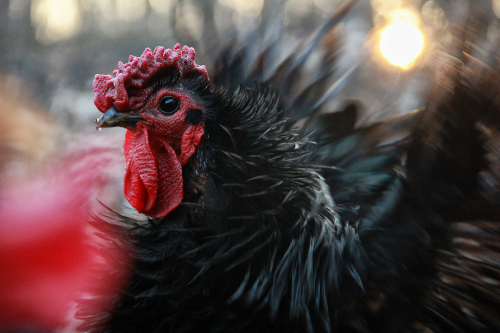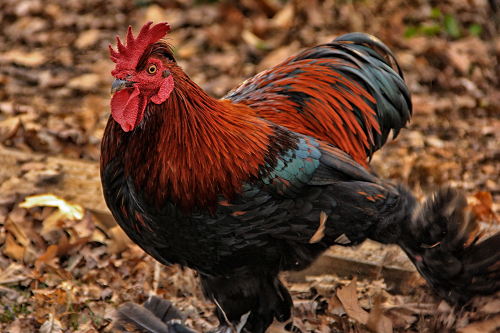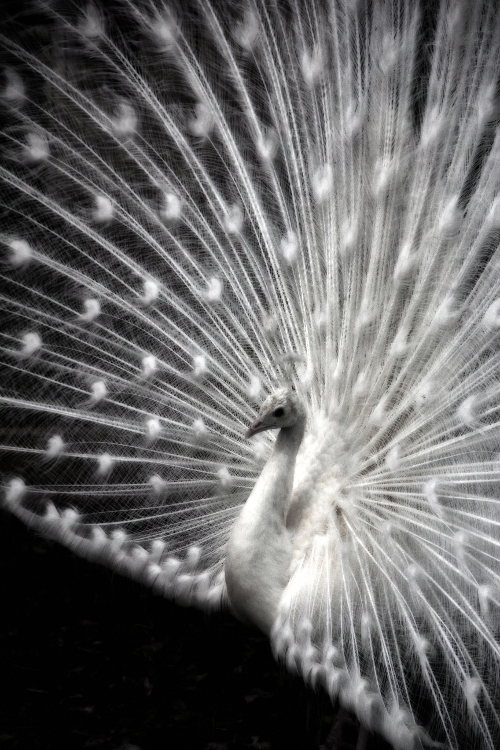The Avian Pineal Gland: Even a Blind Chicken Can See Spring Coming
I am a blogger for Backyard Poultry Magazine and this is an article of mine that they posted on March 10, 2014
 A recent news report stated that in the United States, there was snow on the ground in every state but Florida. So in the thick a winter with record snow falls, spring is on almost everyone’s mind, even the chickens!
A recent news report stated that in the United States, there was snow on the ground in every state but Florida. So in the thick a winter with record snow falls, spring is on almost everyone’s mind, even the chickens!
If you do a quick web search on the Avian Pineal Gland, you will most likely get a profusion of highly scientific articles written with in-depth physiological terminology. They talk about the neurobiology behind the melatonin release from the pineal gland and compare and contrast the differences between mammalian and avian species. Although my time spent teaching college level Anatomy and Physiology afforded me the ability to understand the articles and abstracts, I found that they contained relatively little practical information about how the Avian Pineal Gland serves to regulate the “biological clocks” of our feathered friends. I decided that I would remedy that by writing an article with Backyard Poultry enthusiasts in mind.
So, what is the Pineal Gland? The pineal gland is part of the endocrine system. You probably remember from High School health class that the endocrine system in our body is responsible the chemical messengers called hormones. The Pineal gland releases a chemical messenger called Melatonin. Melatonin regulates biological rhythms which are body processes that happened repeatedly. The two most commonly known “rhythms” are circannual rhythms and circadian rhythms. Circannual rhythms are the things that happen on an annual or yearly basis. The most common example of a circannual rhythm is the migration of certain bird species.  Circadian Rhythms are the biological changes that occur on a daily basis such as sleep patterns and feeding patterns. In poultry, reproduction, such as egg laying, is also circadian.
Circadian Rhythms are the biological changes that occur on a daily basis such as sleep patterns and feeding patterns. In poultry, reproduction, such as egg laying, is also circadian.
The pineal gland is stimulated to release melatonin in periods of very low light, which is why melatonin is commonly associated with the idea of sleep. Conversely, the gland is inhibited shortly after exposure to light, which turns off the hormone release. Thus the length of light and dark periods that poultry are exposed to has a real bearing on the biological rhythms and with that the general health of the bird. Too much light and the gland is not stimulated to release melatonin and begin the rest and renew period that is sleep. Too little light and the body does not get the signals for the appropriate activity period of eating and egg laying. That is why chickens stop laying eggs in the shorter days of winter. The length of the light period is not sufficient to properly stimulate the reproductive sequence in a hen.
 In my articles on coop lighting, I talked in depth about the differences in how chickens eyes “see” the visual spectrum, but there is a major difference in how they “sense” the light and dark. Just as humans do, they sense light through the photoreceptors in their eyes. No big surprise there, right? But the pineal gland in birds is located under the skull in the middle of the bird’s forehead. The skull in this area is actually thin enough for light to penetrate through the skin and skull bone to directly stimulate the pineal gland, which also has photoreceptors. It is like a third eye. So even a chicken that is blind can still “see the light” and continue to have a relatively normal reproductive system as long as they have the right exposure to light and dark periods. They will also be able to sense the shortening of the days in the fall and the lengthening of the days in spring and therefore be able to “see” Spring coming.
In my articles on coop lighting, I talked in depth about the differences in how chickens eyes “see” the visual spectrum, but there is a major difference in how they “sense” the light and dark. Just as humans do, they sense light through the photoreceptors in their eyes. No big surprise there, right? But the pineal gland in birds is located under the skull in the middle of the bird’s forehead. The skull in this area is actually thin enough for light to penetrate through the skin and skull bone to directly stimulate the pineal gland, which also has photoreceptors. It is like a third eye. So even a chicken that is blind can still “see the light” and continue to have a relatively normal reproductive system as long as they have the right exposure to light and dark periods. They will also be able to sense the shortening of the days in the fall and the lengthening of the days in spring and therefore be able to “see” Spring coming.


